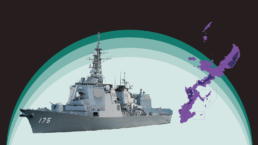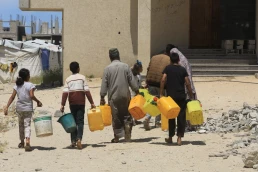A leaked report that shows the military knew for years about dangers to civilian areas follows disclosures of toxic PFAS contamination hidden from the Senate.
By Jon Mitchell, The Intercept
A leaked report describes significant deficiencies in the safety and integrity of the pipelines used by the U.S. military to shuttle fuel to U.S. Marine Corps and Air Force warplanes in Okinawa Prefecture, Japan. As early as 2014, the military discovered monitoring system flaws and dangerous leakages in the pipelines, some of which run beneath civilian communities, but it waited four years before initiating repairs and has never alerted Japanese authorities. The dangers have only come to light thanks to a whistleblower who made public a report produced under contract for the Defense Logistics Agency Energy, or DLA-E, the Department of Defense agency that supplies fuel to military facilities.
Published in March 2015, the report details inspections of vapor monitoring systems that detect fuel leaks along the 100-plus miles of pipelines in the prefecture. The results showed 43 of the 60 monitoring systems were inoperable due to problems like broken sensors and alarms; in at least one case, the alarm and sensor system were missing entirely. The devices are supposed to notify the local DLA-E compound of leaks, which can cause environmental contamination, explosions, and fires.

The disclosure comes on top of recent revelations that the military may have hidden details of per- and polyfluoroalkyl substances, or PFAS, contamination on Okinawa from a senior member of the Senate Armed Services Committee, including information pointing to the possible exposure of children at a civilian school.
Recent Posts
“Arrest Now, Ask Questions Later”: Why Did L.A. ICE Agents Arrest and Jail U.S. Citizen Andrea Velez?
July 3, 2025
Take Action Now “They didn’t have vests that said ICE or anything. Their cars didn’t have license plates. … Just because of the color of our…
Trump’s Big, Beautiful Bill Is Naked Class War
July 3, 2025
Take Action Now Trump’s “Big, Beautiful Bill” trades tax cuts on millionaires for the dissolution of society.By Hamilton Nolan, In These Times…
Mayor Mamdani’s First Day, A Zero Hour Conversation With Richard Wolff
July 2, 2025
Take Action Now If elected, what would Mayor Mamdani do on his first day in City Hall? How would a democratic socialist govern as a big-city mayor?……
The U.S. Is Funding A Bloodbath At Gaza Aid Centers
July 2, 2025
Take Action Now The admin just gave $30M to GHF, the organization at the center of charges that Israel is weaponizing assistance and shooting at…




